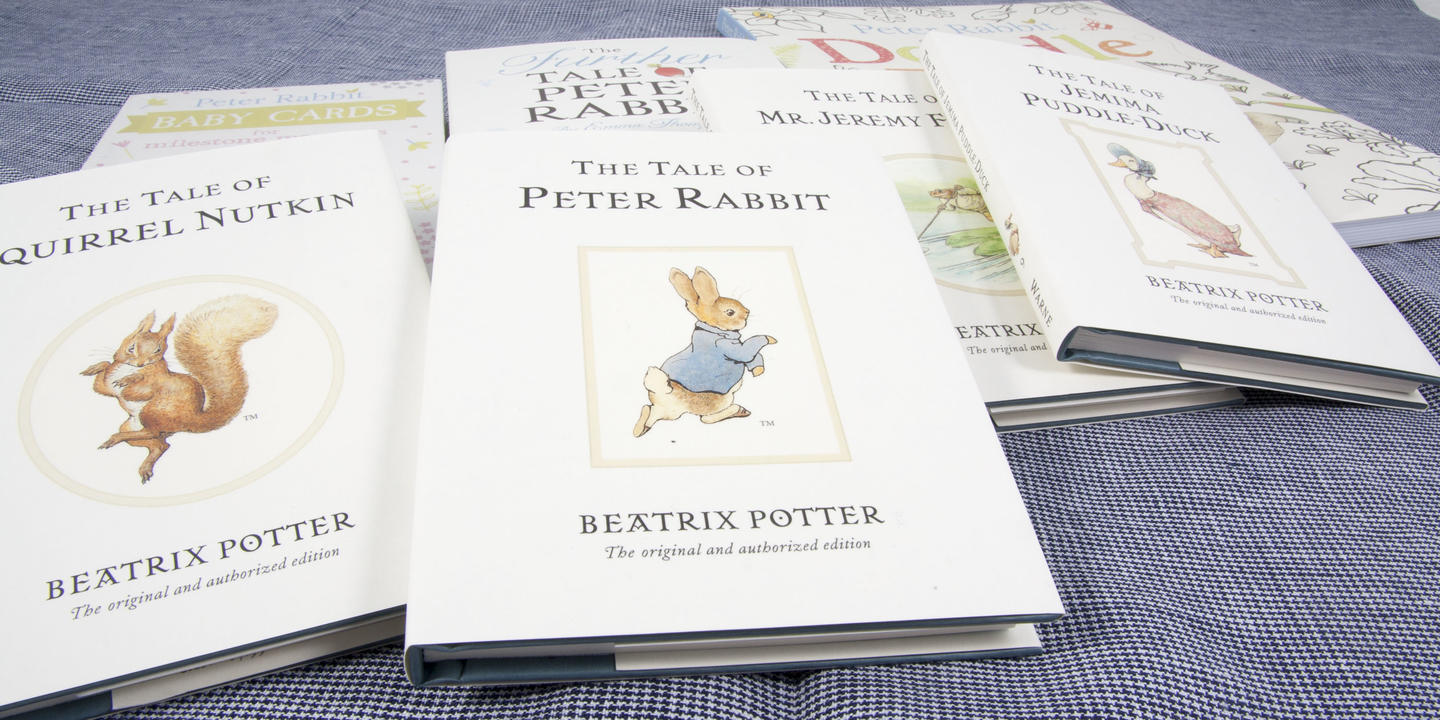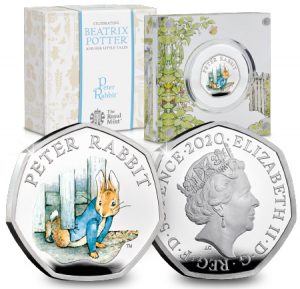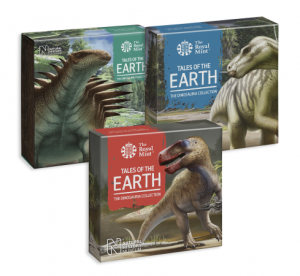Posts Tagged ‘2020 UK coins’
Why this year’s Snowman UK 50p is the RAREST yet…
The Tale of Peter Rabbit and the 50p
In recent years there’s one coin that has catapulted to the top of the must-have list for many collectors. Of course, I’m talking about the 50p.
And whilst the 50p has always had a place in collector’s hearts – it has after all featured some of the most sought-after designs of all-time, such as Kew Gardens – it wasn’t until Beatrix Potter’s mischievous, blue-coated bunny first appeared on a 50p that our love for the 7-sided coin really took off. And with it came a whole new dawn of collecting, and a new generation of collectors.
Our tale starts back in 2016…
150th Anniversary of Beatrix Potter
It all started with the milestone 150th anniversary of one of Britain’s most beloved children’s book authors – Beatrix Potter.
The Tale of Peter Rabbit was her very first children’s tale to be published, in 1902, and it was an instant success. Spurred on by this, and inspired by fairy tales and fantasy, Potter penned 23 original children’s books in total, featuring charming illustrations and imaginative animal characters.
What Beatrix Potter didn’t know at the time was that her lively illustrations would later prove to be the inspiration behind one of, if not the, most popular coin series ever released.
Peter Rabbit’s 50p Debut
In honour of Beatrix Potter and her legacy, the Royal Mint announced a 50p coin collection in 2016, featuring four of her characters, and a design paying tribute to the author herself.
The obvious starting place was with Beatrix Potter’s most famous creation – Peter Rabbit. Known for his cheeky escapades in Mr McGregor’s garden, Peter Rabbit featured in 6 of Beatrix Potter’s tales.
The 50p release of Peter Rabbit was special for several reasons:
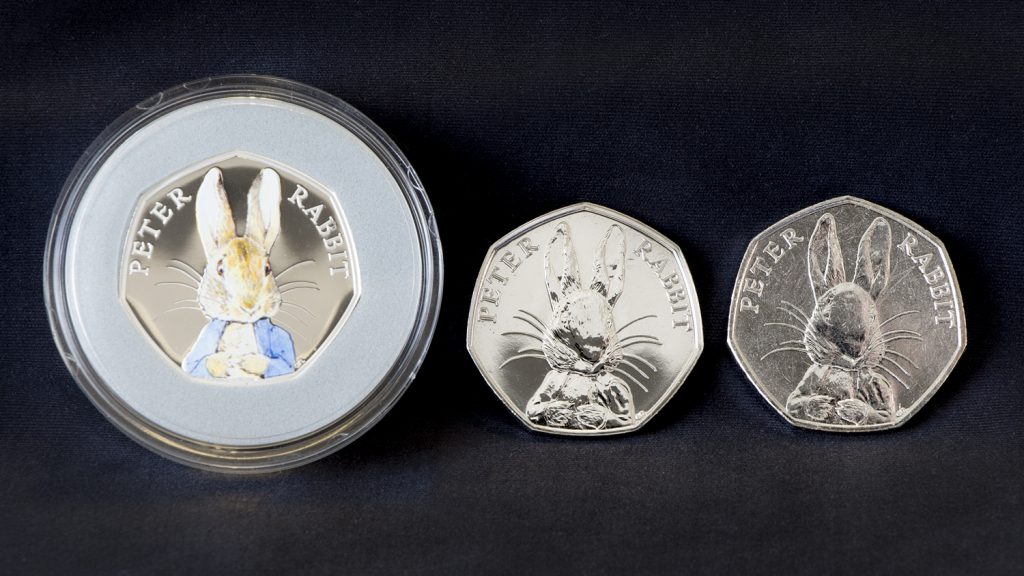
- First time a fictional, children’s book character had featured on a UK 50p – paving the way for future popular issues such as The Gruffalo, The Snowman and Paddington Bear.
- The Silver Proof version of the coin featured colour printed image for the very first time.
These two facts revolutionised 50p collecting, and our furry little friend Peter went from being a beloved literary character to a collecting sensation.
Start of the Collecting Storm
It’s safe to say that The Royal Mint created a collecting storm. The UK 2016 Peter Rabbit Silver 50p was so popular that by mid-morning on the day it was released, The Royal Mint’s website crashed under the sheer weight of public interest. Not long after, all 15,000 coins completely sold out.
But that was just the start.
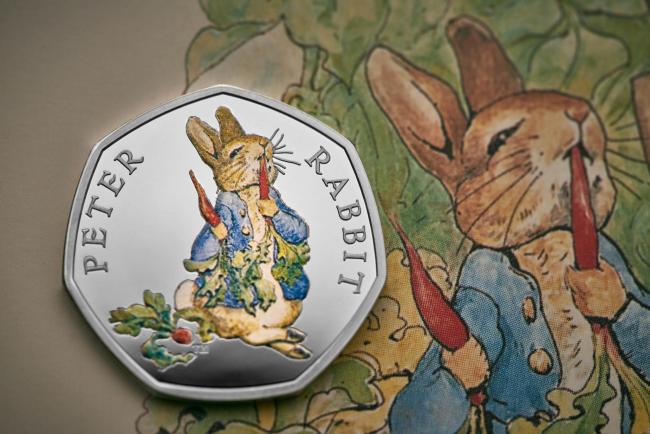
Peter Rabbit has now featured on five 50ps, and the collector response has continued to be unprecedented – his popularity is unrivalled. Even when the edition limit of the Silver Proof 50p more than doubled to 35,000 in 2018, it completely sold out!
In fact, the Silver Proof 50p has become the must-have specification and sell-outs mean it’s notoriously difficult for collectors looking to back-fill gaps in their collections – some issues are virtually impossible to come across now.
It’s become imperative for collectors to snap up Silver Proof 50ps when they can – as in some cases waiting even just a few hours could prove to be too late. Take the Gruffalo Silver 50p – it took a mere 12 hours for the entire edition limit of 25,000 to sell-out. That’s a record.
Last Ever UK Peter Rabbit 50p
All in all, there has been 15 Beatrix Potter 50ps issued since 2016, each one helping solidify the Beatrix Potter 50p series as one of, if not the, most collectable coin series we’ve ever seen.
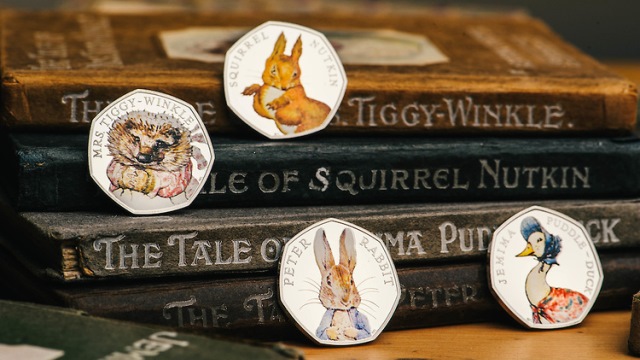
The coin collecting world was shook earlier this year when it was announced that 2020 would be the very last time Peter Rabbit would feature on a UK 50p coin.
Even though this may be the end of Peter Rabbit’s 50p journey, there’s no doubt that all the Beatrix Potter coins will continue to be highly desirable for years to come.
But this does now leave collectors wondering will the next collecting sensation be? Let us know your thoughts in the comments!
If you’re interested…
The LAST EVER UK Peter Rabbit Silver 50p was released earlier this year, and we’re lucky to have a limited number available. Expertly struck from .925 Silver to a proof finish, it features a coloured image of Peter Rabbit escaping from Mr McGregor’s garden – a classic Beatrix Potter illustration! This is a must-have for all Beatrix Potter fans and 50p collectors alike. Click here for more information >>
Uncovering the British discoveries that inspired the Dinosaur 50p coins
I’ve always loved dinosaurs. As a child I’d be glued to the TV watching The Land Before Time and Jurassic Park, and I lost count of the number of family outings to the Jurassic Coast just so I could comb the beaches looking for fossils – I found a few ammonites, but alas no dinosaur bones!
The fact that their time on Earth remains mostly a mystery has fuelled our fascination with them for years. So, I’m sure many collectors shared my excitement when The Royal Mint announced a new UK 50p coin series dedicated to the celebration of dinosaurs. And if you’re a dinosaur enthusiast like me, I’m sure you’ll appreciate the special design details of these coins, that pay tribute to the British discoveries at every possible turn…
Dinosauria
What you may not know is that whilst fossils have been found on every continent on Earth, the study of dinosaurs actually started right here in the UK. In fact, over 50 to 60 species have been discovered beneath out feet.
The term ‘dinosaur’ that we use today comes from the term ‘Dinosauria’, which was coined by British Anatomist Richard Owen in a paper published in 1842. Owen was the first to realise that the remains of three creatures found in various locations within the UK shared common characteristics.
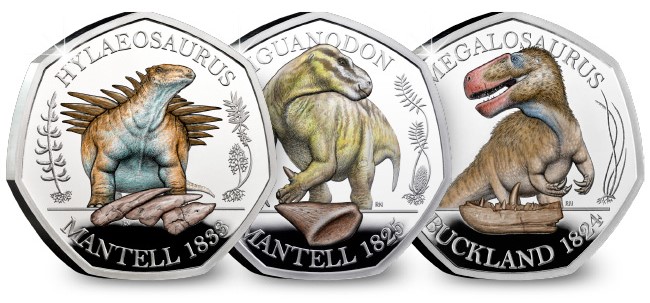
To celebrate Owen’s ground-breaking conclusion, the first three creatures that led him to his discovery have been featured on a UK 50p. Issued in collaboration with the Natural History Museum each one has been expertly brought-back to life by palaeo-artist Robert Nicholls.
Megalosaurus
Megalosaurus comes from the Greek for ‘great lizard’, and at seven to eight metres long it certainly lives up to its name! In terms of its appearance it can be compared to a T-Rex and comes from the same family of large carnivorous dinosaurs that can walk on two legs.
The Megalosaurus is the first dinosaur to ever be officially named in scientific literature. It’s thought that the earliest evidence of a Megalosaurus was found as early as the 17th century, but it wasn’t until years after it was first discovered that it was termed a dinosaur.
It was in 1824 that palaeontologist William Buckland produced the first scientific description of a Megalosaurus, based on fragments of jaw and bone found in Oxfordshire. This is the first non-aviation dinosaur to be formally named.
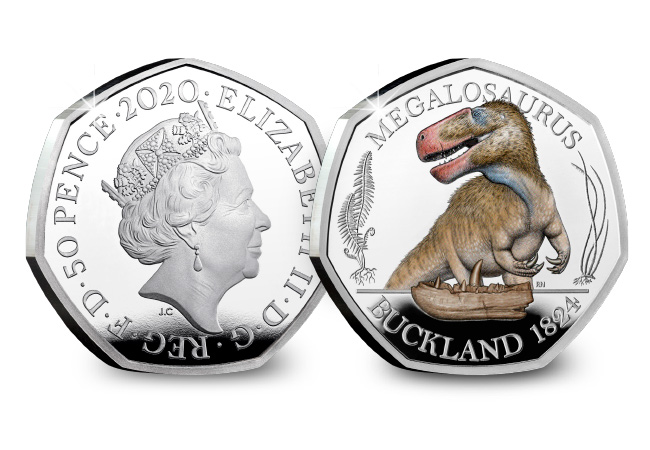
You’ll notice on the 50p coin that the Megalosaurus is framed by a jaw fragment, as a nod to the fossil that gave Buckland his breakthrough. Likewise, Buckland is featured, as is the year of the discovery, 1824.
Iguanodon
It was in 1822 that Mary Mantell spied a large tooth at the side of the road in Sussex, and upon pulling over realised it belonged to an unknown creature. Her husband, Geologist Dr Gideon Mantell, noticed that the tooth was similar to that of an iguana, and later in 1825 came to call it an Iguanodon. This was the second dinosaur species to receive its name.
It wasn’t until several years later in 1834, when an explosion in Maidstone revealed fragments of an ancient skeleton that Mantell could conceptualise what an Iguanodon may have looked like.
As well as distinctive iguana-like teeth, other distinctive features of an Iguanodon include its large thumb spikes, which were possibly used for defence against predators, combined with long fifth fingers capable of grasping, allowing them to forage for food. The creatures belong to the dinosaur family of medium-sized herbivores that usually walked on two legs.
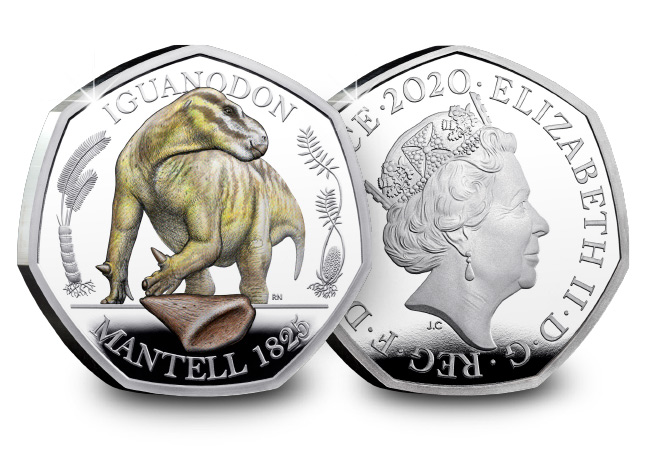
You’ll see that the 50p design credits Mantell with the discovery in 1825, and also depicts the tooth that originally sparked the naming of the creature as an Iguanodon.
Hylaeosaurus
And last, but no means least is the Hylaeosaurus, the third dinosaur to be officially discovered and scientifically named.
Out of the three first dinosaurs to be discovered, it is the Hylaeosaurus’ anatomy that we know the least about as little remains have been uncovered. It is thought that the Hylaeosaurus was a herbivorous, armoured creature, around five meters long with spikes along its back. Its name means ‘woodland lizard’ and is in the same family as the Stegosaurus.
It was again Dr Gideon Mantell who can be credited with the discovery of the Hylaeosaurus. The first remains of the creature were found in Sussex in 1832, and astonished Mantell because the discovery was the most complete non-aviation dinosaur skeleton known at the time. The discovery included several spikes and armour plates, for which this dinosaur is now known. But it wasn’t until 1833 that Mantell published his findings, and the creature was officially named Hylaeosaurus.
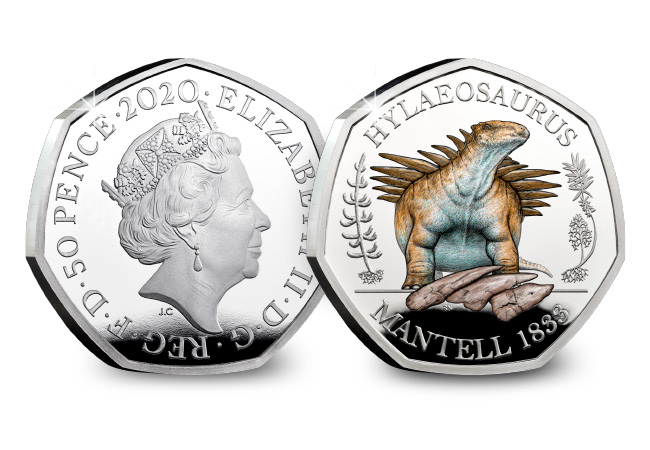
The design of the 50p again incorporates important details about the discovery of the Hylaeosaurus. You’ll see Mantell is noted alongside the year of discovery, 1833, and the initial spikes that were discovered as part of the first skeleton.
If you’re interested…
The Dinosaur 50p series has proven tremendously popular with collectors, not least because this is the first time dinosaurs have ever featured on UK coinage. That said, it’s been the Coloured Silver Proof 50ps that have stolen the show.
We’re lucky to be able to offer a select number of collectors the chance to secure the Complete Silver Dinosaur 50p Collection today. Importantly, we’ve seen precious metal sell-outs across the range, so this is likely to be your only opportunity to secure ALL THREE Dinosaur 50ps in superior Silver Proof quality. Click here to find out more >>


